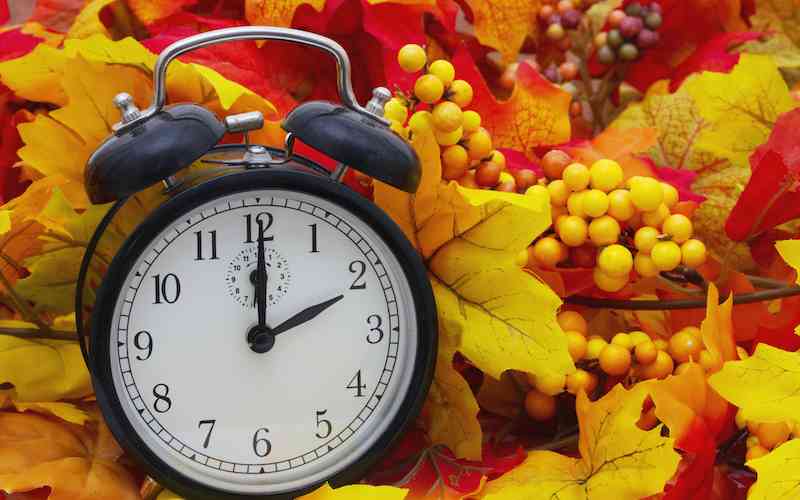
Adjusting To Shorter Days When Daylight Savings Time Ends
Cooler temperatures usher in the end of Daylight Savings Time (DST) and shorter daylight hours. On Halloween this year, October 31, 2020, we’ll be setting our clocks backward one hour at the stroke of midnight. This annual “changing the clocks back” results in noticeable darkness in the early evening and can result in negative physical reactions for many people, such as lethargy and fatigue. Here’s some background on Daylight Savings Time and some strategies to combat the effects of living with less light.
About Daylight Savings Time
Daylight Savings Time originated in Europe during World War I, and began as an effort to save on the cost and use of fuel and lighting during a time of supplies rationing. The idea was that by shifting more daylight from very early morning to the end of the day, families could make better use of daytime and would have fewer hours in which they would need to rely on artificial lighting. Toward the end of World War I, the U.S. House Of Representatives almost unanimously voted to “save the daylight”, and the first U.S. DST took place on March 15, 1918. Since then, all U.S. states except Arizona and Hawaii change the clocks forward one hour every spring and back one hour every fall. In recent years, several states have debated putting an end to the twice yearly clock changes – either by making DST permanent or by changing to year-round standard time.
The Effects of Less Light
Any change to the amount of daylight – even by just one hour – can impact people physically and psychologically. For example, one study indicated a rise in the number of people suffering from sudden and debilitating headaches following the fall time change. Often the effects of less light can be exacerbated in people over the age of 65. It is important to monitor your state of mind during this time period and reach out to your doctor or other medical professional if you feel that you are having difficulty coping with shorter days. A reduction in daylight can have a variety of effects on people, such as those listed below. In extreme cases, people may suffer from Seasonal Affective Disorder (SAD), a condition that results in depression and feelings of hopelessness.
- Disruptions in sleep due to changes in personal circadian rhythms.
- Feelings of depression or anxiety.
- Vitamin D deficiency due to insufficient exposure to sunlight.
- Difficulty in concentrating on regular tasks, feeling out-of-sorts or the sensation of “brain fog”.
- Fatigue, achiness and lethargy.
- Loss of interest in social activities or in things that are normally enjoyable.
Combating the Effects of Less Light
There is a wide range of how the effects of less daylight may present in people, from drowsiness and irritability to very serious health conditions. Those who feel physically or emotionally impacted to any degree by changes in light may find one or more of the following strategies useful:
- Get outside on sunny days, even if you have to bundle up. The jolt of Vitamin D can improve mood.
- Consistently make time for 30 minutes of daily exercise. If the weather isn’t cooperating, find an indoor option (an indoor pool, a treadmill or stationary bike, an online exercise class, a yoga app, etc.).
- Practice consistent sleep habits and good sleep hygiene. Turn off all electronics a few hours before bedtime, make sure your bed is comfortable and use blackout shades and earplugs if light or noise disrupts your sleep. Going to sleep and waking up at the same time every day will help your body adjust faster to the time change.
- Keep bright light exposure to daytime hours only. For example, use a nightlight in the bathroom to avoid switching on the main light at night.
- Soak up more natural light during the day by keeping window blinds or drapes open, hanging a mirror or two to reflect and amplify the amount of light in a room and selecting light wall colors to reflect more light.
- Avoid caffeine and alcohol which can cause feelings of sluggishness and sleep disruptions.
- Consider the use of Light Therapy to help with feelings of depression stemming from seasonal light changes.
At Daylesford Crossing, we believe in a holistic approach to health and well-being and offer a wide variety of lifestyle and wellness programs. Schedule a tour today to learn more about our attractive lifestyle for seniors that honors their desires and recognizes their ever-changing needs.